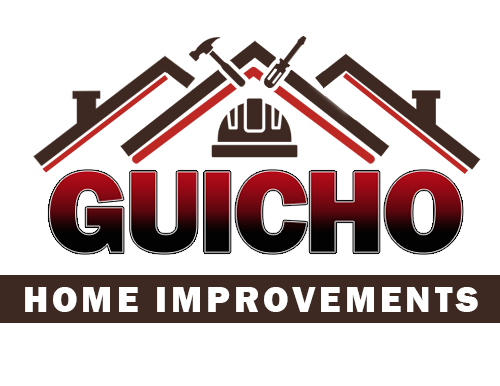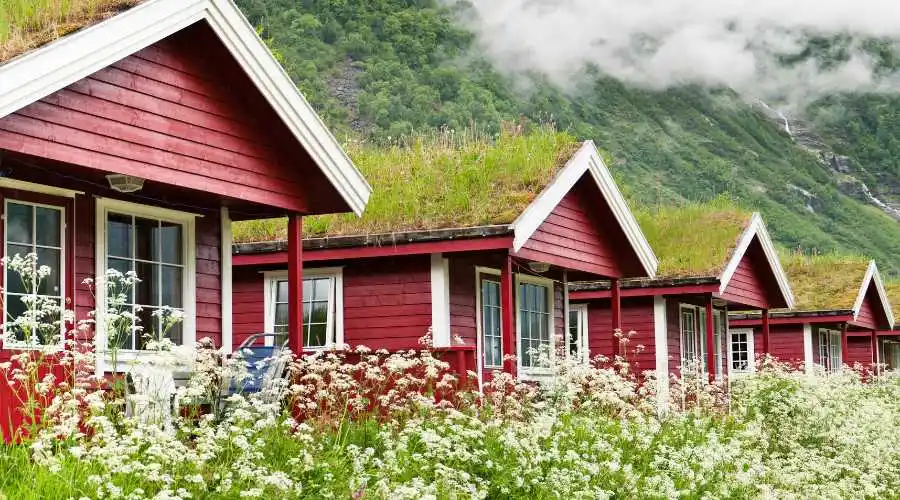Green roofs, with their lush vegetation and eco-friendly appeal, are becoming increasingly more popular for the past years for homeowners and businesses alike due to people being more sustainability-conscious. These roofs feature vegetation growing over waterproof layers of materials, offering numerous benefits such as maximising unused space, saving money on heating and cooling costs, and contributing positively to the environment. Whether you own a private home, an office complex, or a shed, you can transform your flat or sloped roof into a beautiful and sustainable garden.
There are two main types of green roofs: extensive (with a soil layer of 6 inches or less) and intensive (with a soil layer of more than 6 inches). If you’re considering a DIY Roofing project, an extensive roof is the more suitable choice.
Benefits of a Green Roof
If you’re still on the fence about getting a green roof, consider these unique advantages that you may not have yet considered and realised:
- Enhanced Insulation: A green roof acts as a natural insulation, keeping your home cooler in the summer and warmer in the winter. This can lead to an estimated yearly savings of up to $5,000 on heating and cooling costs.
- Sound Barrier: Green roofs create a sound barrier, reducing noise from high-traffic areas or equipment like pool pumps.
- Wildlife Habitat: Your green roof will become a habitat for wildlife, attracting pollinators and providing them with a valuable food source.
- Stormwater Management: Green roofs help manage stormwater runoff, reducing the burden on municipalities and potentially qualifying you for “cool roof” rebates and low-interest loans.
- Lower Carbon Footprint: As plants absorb carbon dioxide, a green roof lowers your building’s carbon footprint and contributes to combating climate change.
- Heat Island Reduction: Green roofs have been proven to reduce heat intensity in urban settings, mitigating the heat island effect.
- LEED Certification: A green roof may help your home qualify for LEED certification, leading to potential homeowner’s insurance discounts, tax breaks, and increased resale value.
Before You Begin
Installing a green roof is more complex than simply painting your roof green. Before you start, assess whether your roof is suitable for supporting a garden.
- Flat or Sloping Roof: Green roofs are easiest to install and maintain on flat roofs. Low-sloping roofs (with a rise of up to three feet for every 12 feet of length) can also support a green roof without additional stabilization. Steeper slopes may require reinforcement systems like tray planting or terracing. It is better to asses what roof type you have and if having a green roof is applicable.
- Weight Considerations: The ideal soil layer depth for a green roof is four to six inches. However, a green roof can add up to 30 pounds of load per square foot. Consult a structural engineer to determine if reinforcements are needed.
- Insulation: Insulation is required when increasing the R-value for roofs over conditioned spaces. For unconditioned spaces like garden pavilions or sheds, minimal insulation is sufficient.
- Edging: For an edging, intermediate angle supports may be necessary to keep it sturdy without penetrating the waterproof membrane.
- Soil Mix: Homeowners can create a lightweight soil mix by blending aggregate (e.g., expanded shale, slate, or volcanic rock) with organic potting soil.
- Plant Selection: Choose plants that can withstand extreme climates, pests, and rooftop temperatures that can reach 150 degrees F or higher.
The Installation Process
Here’s a step-by-step guide for installing a green roof on a flat surface using a multi-layered waterproof barrier:
- Install Waterproof Membrane: Place a monolithic type waterproof membrane (rubber or plastic) on top of the roof decking.
- Add Plastic Sheet: Lay a 6-millimeter sheet of plastic on the waterproof membrane to serve as a root barrier.
- Top with Foam Insulation: Add one or more thin sheets of three-quarter-inch foam insulation for protection and drainage.
- Set Drainage Mat: Place a drainage mat (dimple mat) with capillary spaces on top of the insulation to prevent soil from clogging the mat.
- Frame the Sides: Frame the sides with mesh gutter guards, wood, or other edging for proper drainage and soil containment.
- Add Soil: Add soil to the garden space, distributing it evenly.
- Place Plants: Set plants in place, arranging taller ones in the back for proper sun exposure.
- Water: Water the green roof to settle the soil around the plants.
FAQs
1. Should you anticipate any problems with a green roof?
Drainage issues are the most common type of green roof “failure.” Ensure proper drainage maintenance to prevent waterlogging. Inspect your gutters and if you are unsure, seeking gutter services from a reliable roofer would be the best way to go.
2. What should you plant on your green roof?
Consider perennial succulents, sedges, groundcovers, and low-maintenance, shallow-rooted plants suitable for your location.
3. How much maintenance does a green roof require?
Green roofs typically need to be weeded two or three times a year and may need watering during dry periods.
4. Are green roofs feasible for cold climates?
Choose plants that can withstand the climate and expect the roof to remain green in winter with evergreen plants.
Maximize Your Space, Save Money, and Embrace Eco-Friendly Living with a Green Roof
Transform your rooftop into a stunning green oasis with the help of Wayne NJ Roofing. Our team of experts is dedicated to creating sustainable and visually appealing green roofs that enhance your space and contribute to a greener future. Contact us today to explore the possibilities of a green roof for your property.





